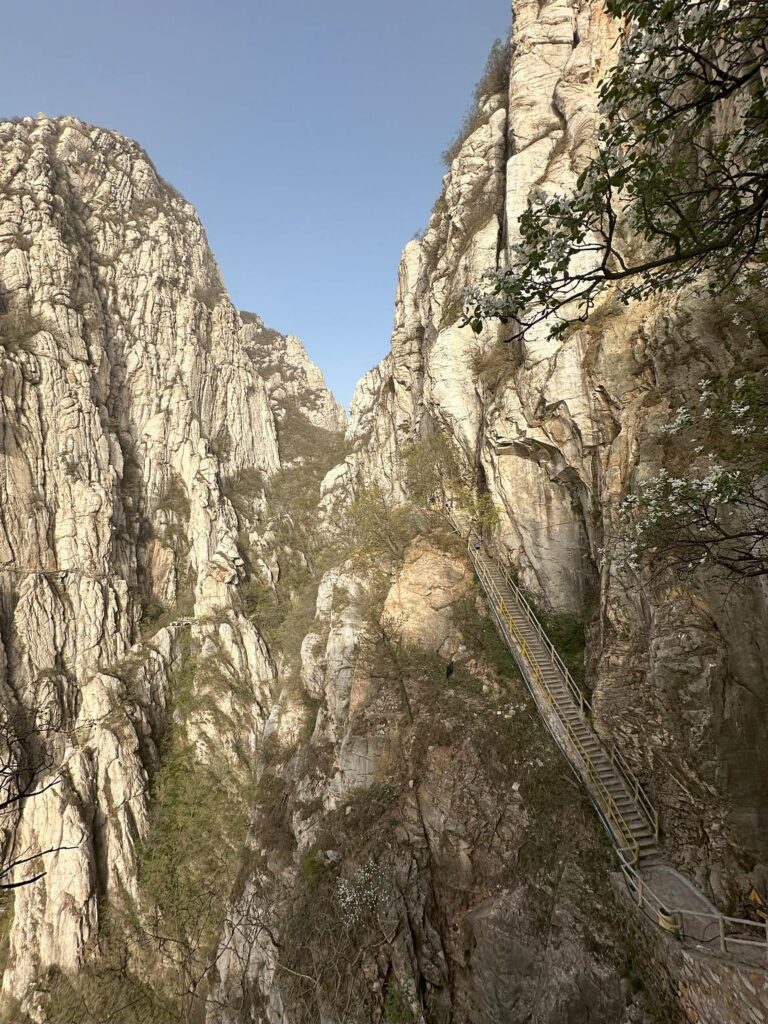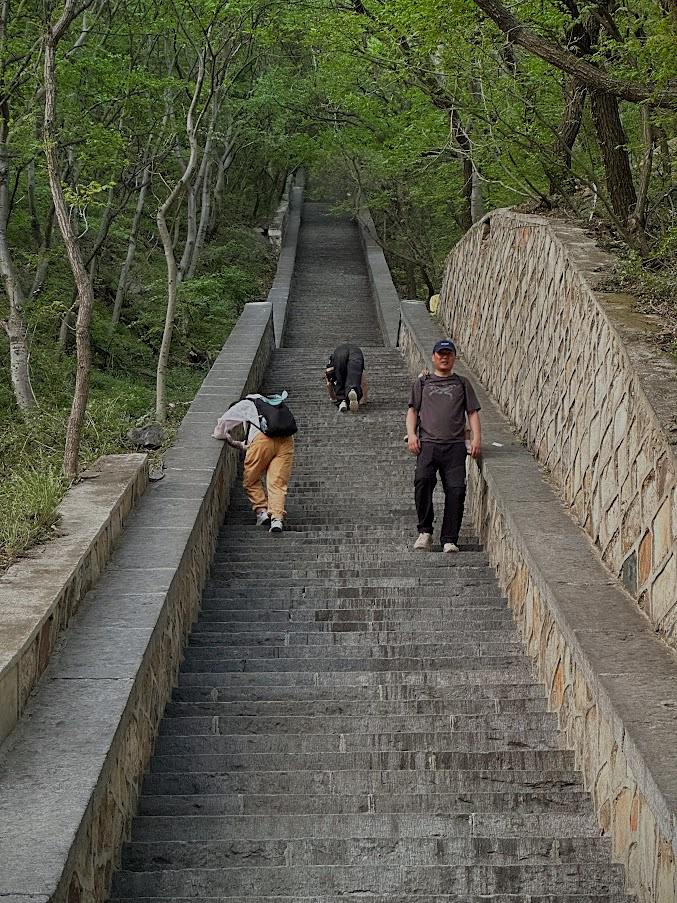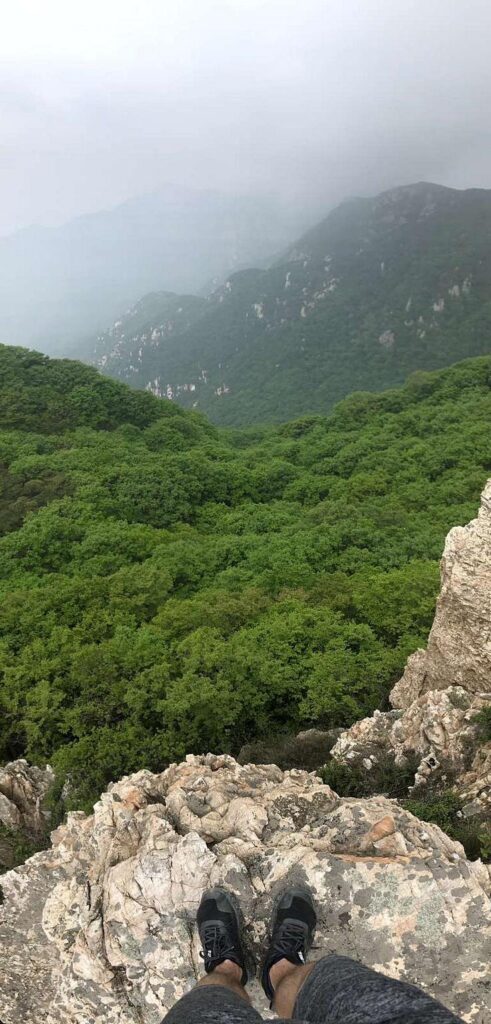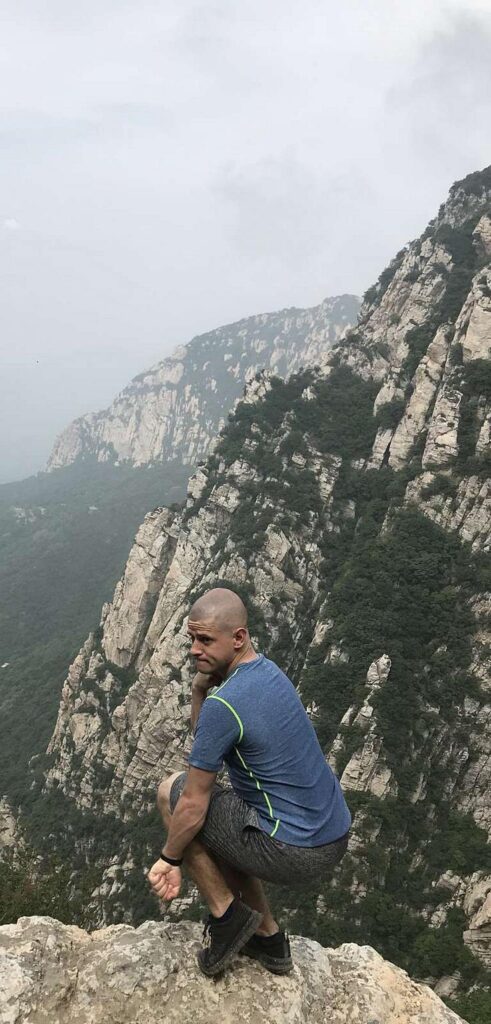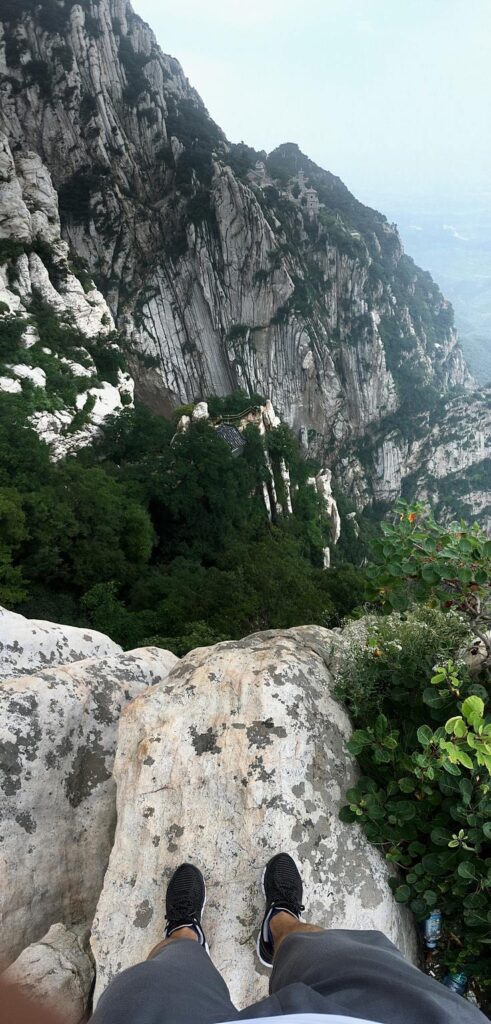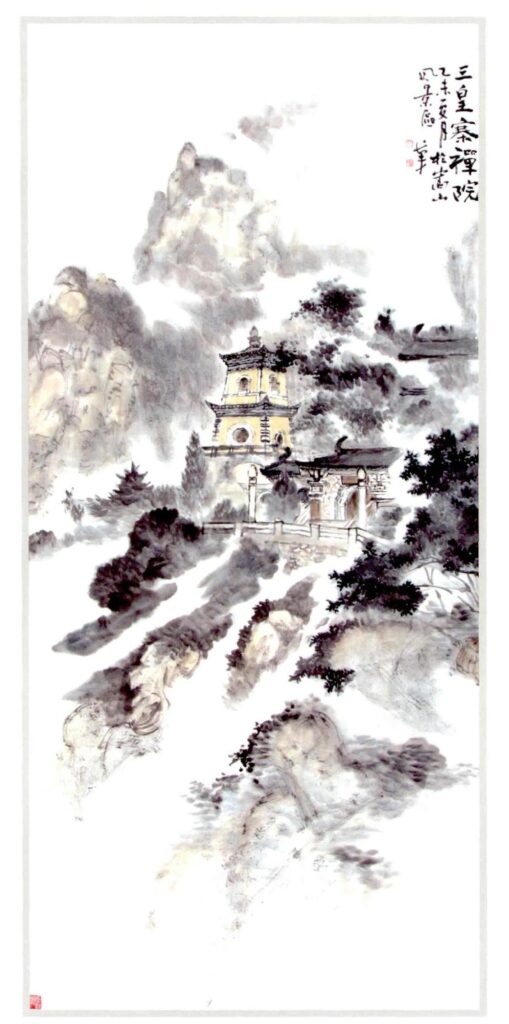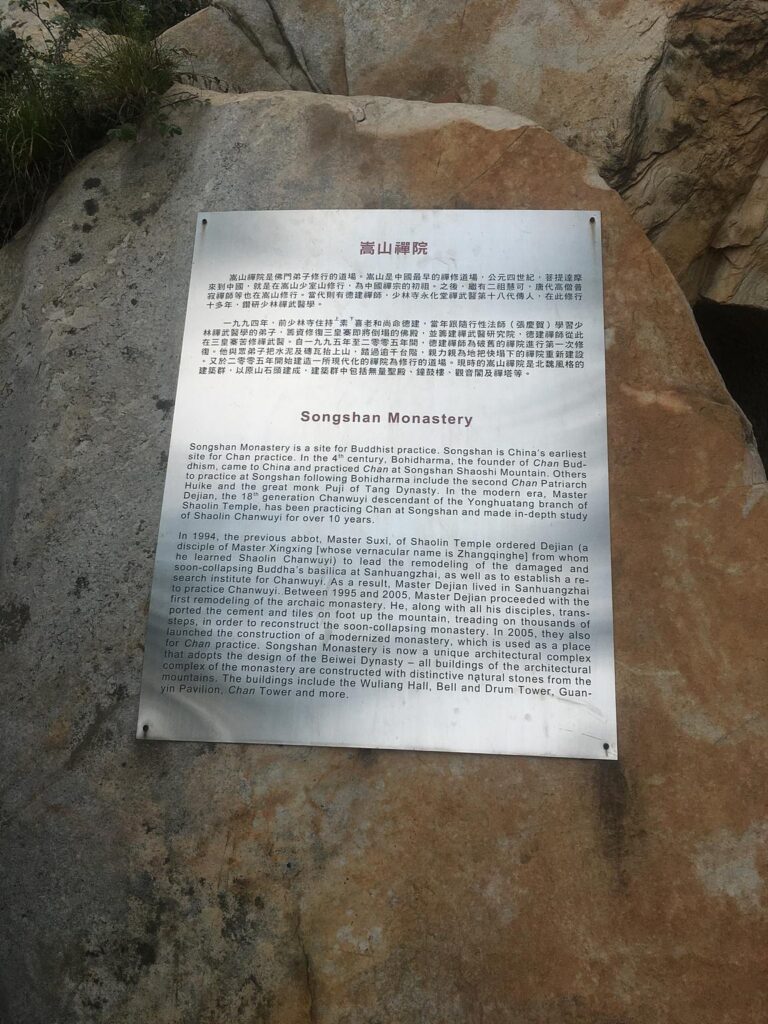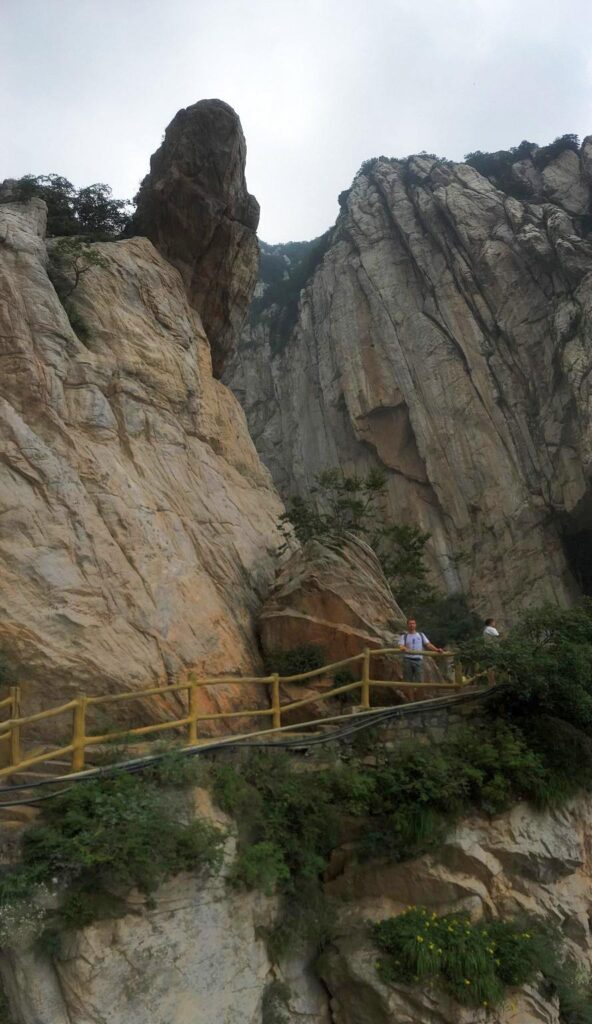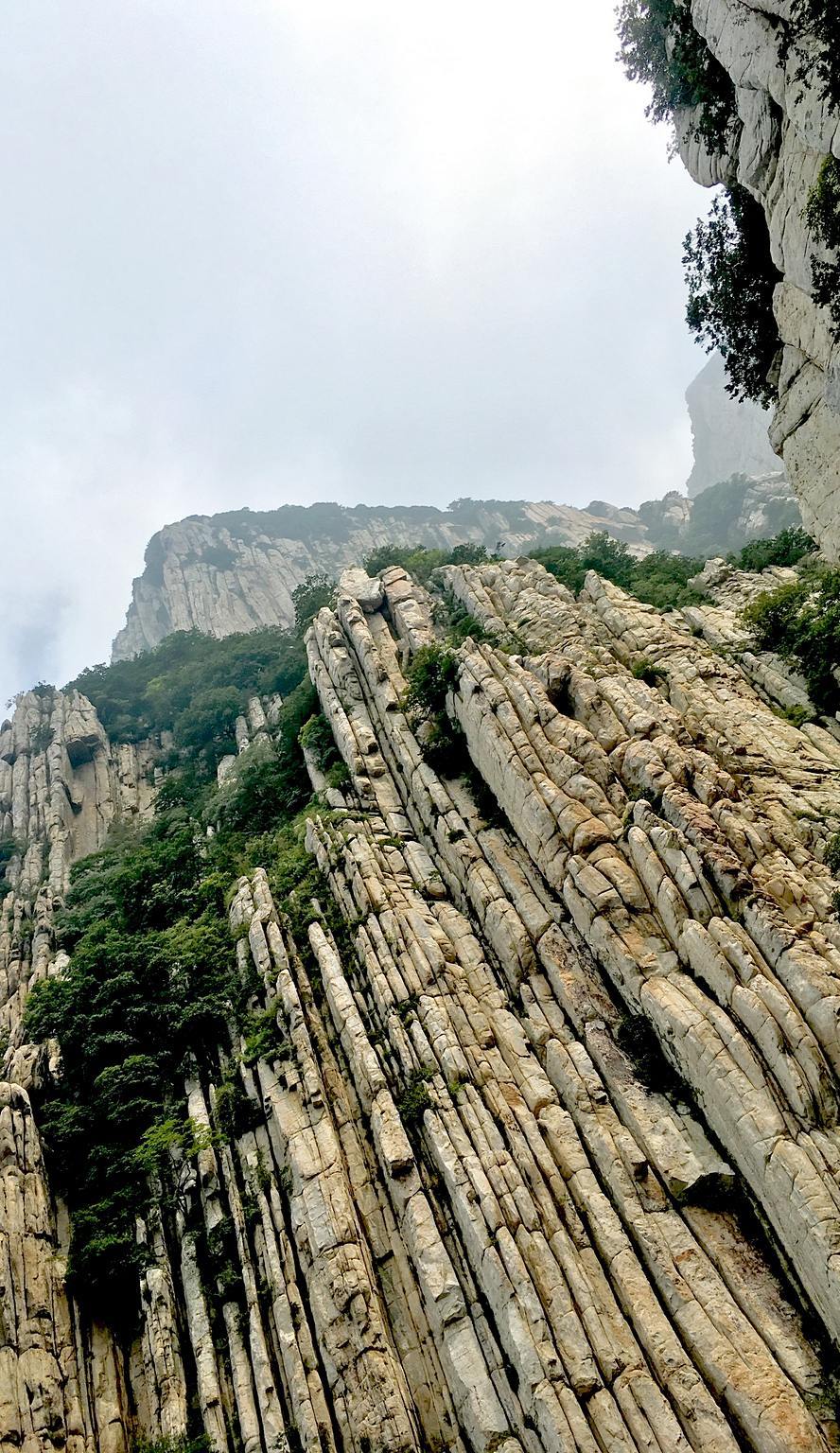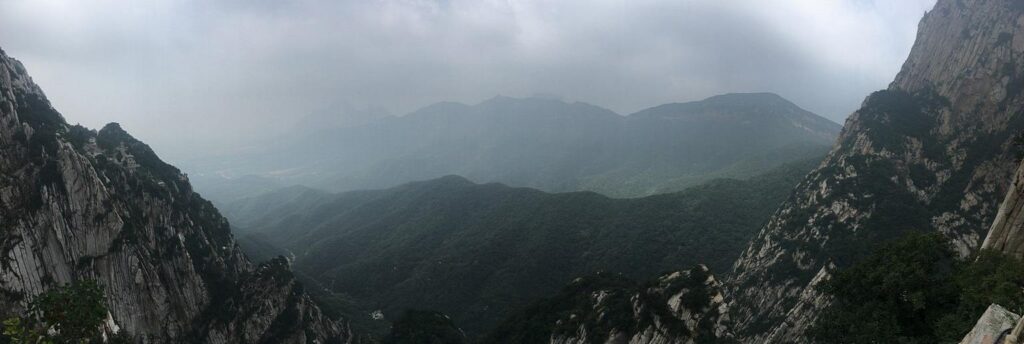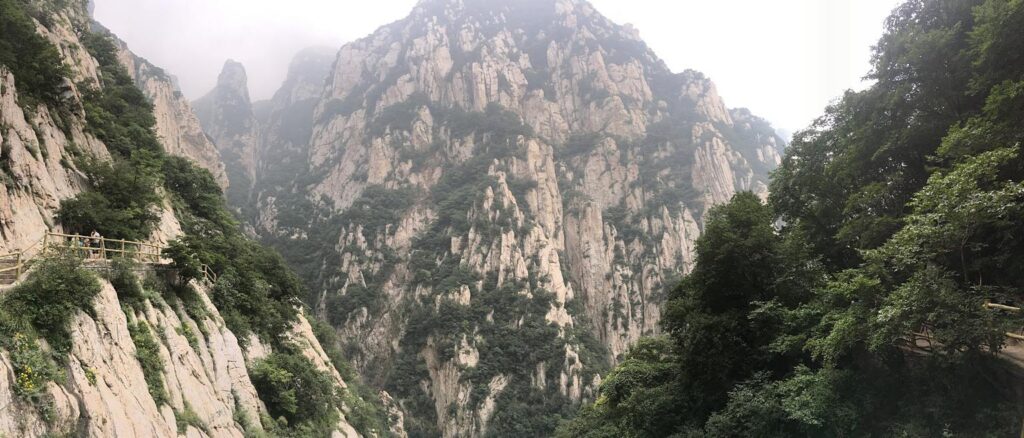Sanhuangzhai: From Shaolin to the Three Emperors Temple
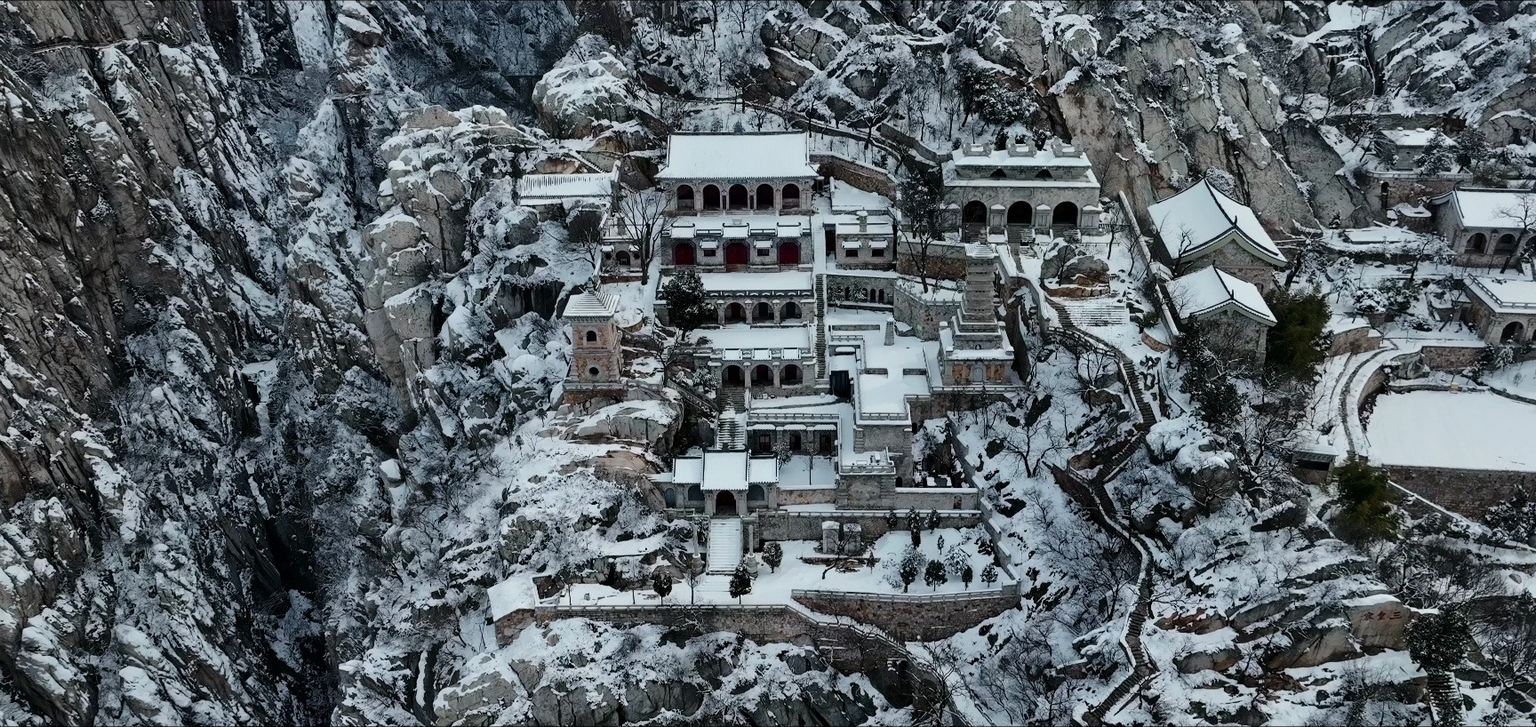
Welcome to the excursion from Shaolin Monastery (少林寺, Shàolínsì) to Sanhuangzhai Temple (三皇寨, Sānhuángzhài), located in the heart of the Songshan Mountains (嵩山, Sōngshān). This hiking route in China is not just a trip along picturesque paths, but also an immersion in the spiritual heritage of China, perfect for Russian company executives. If you are looking for a way to combine physical activity, cultural enrichment and relaxation, this tour will be your best choice. In the article, you will find everything: from the history of the route to practical tips on how to organize a trip and even learn kung fu in Shaolin. Read and plan your trip to China today!
The path from Shaolin Monastery to Sanhuangzhai Temple
The Song Mountains in Henan Province (河南, Hénán) are one of the Five Sacred Mountains of China (五岳, Wǔyuè) and are considered the “central mountain” due to their geographical location in the heart of ancient China. They are also known as the cradle of Taoism, Buddhism, and martial arts, especially due to the Shaolin Temple. The trail from the Shaolin Temple to Sanhuangzhai Temple is not only a scenic route for tourists, but also a path steeped in history and spiritual significance.
General information about the route
The Northern Trail starts at the Shaolin Temple, which is located at the foot of Mount Shaoshan (少室山, Shàoshìshān), one of the two main peaks of Songshan (the other being Mount Taishan, 太室山, Tàishìshān). The route to Sanhuangzhai is about 3-4 kilometers long, equivalent to climbing 100 stories, and passes through steep slopes, stairs, and forest trails. This route is considered part of the Songshan Geopark (嵩山地质公园, Sōngshān Dìzhì Gōngyuán), which was designated a UNESCO World Geopark in 2010.
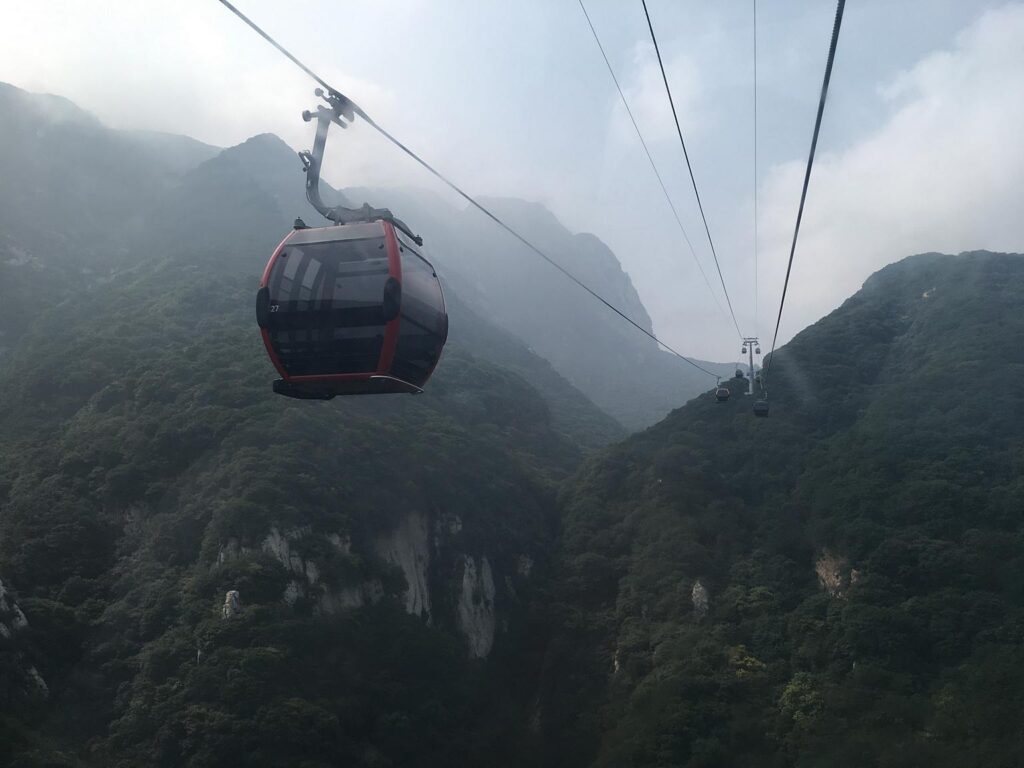
After the cable car ride, through a series of descents and ascents through deep gorges, crossing the Liantian suspension bridge, walking along a suspended path, visiting the Shuzeyan cliff (Book Cliff), and when it seems that everything is already over, the last stage awaits us - the Haohanpo slope - "Slope of the Brave" with 486 steep steps. Its steepness and length exceed all expectations, immediately calling into question the readiness of unprepared tourists for the hike. Many are helped by looking down on it from above.
Leaving behind us a simple stone building with the inscription "Yungong Jinjue" ("Cloud Palace of the Golden Gate"), we descend from the palace to the ground. Our driver is waiting for us below, but independent travelers will have to return on their own, where you may feel cheated.
Interesting fact: The trail to Sanhuangzhai passes through historic sites where Shaolin monks are said to have trained to perfect their martial arts. Some of the stone steps along the trail date back to the Tang Dynasty (唐朝, Tángcháo, 618–907), making the trail not only a natural but also a cultural attraction.
Temple of the Three Emperors (三皇寨, Sānhuángzhài)
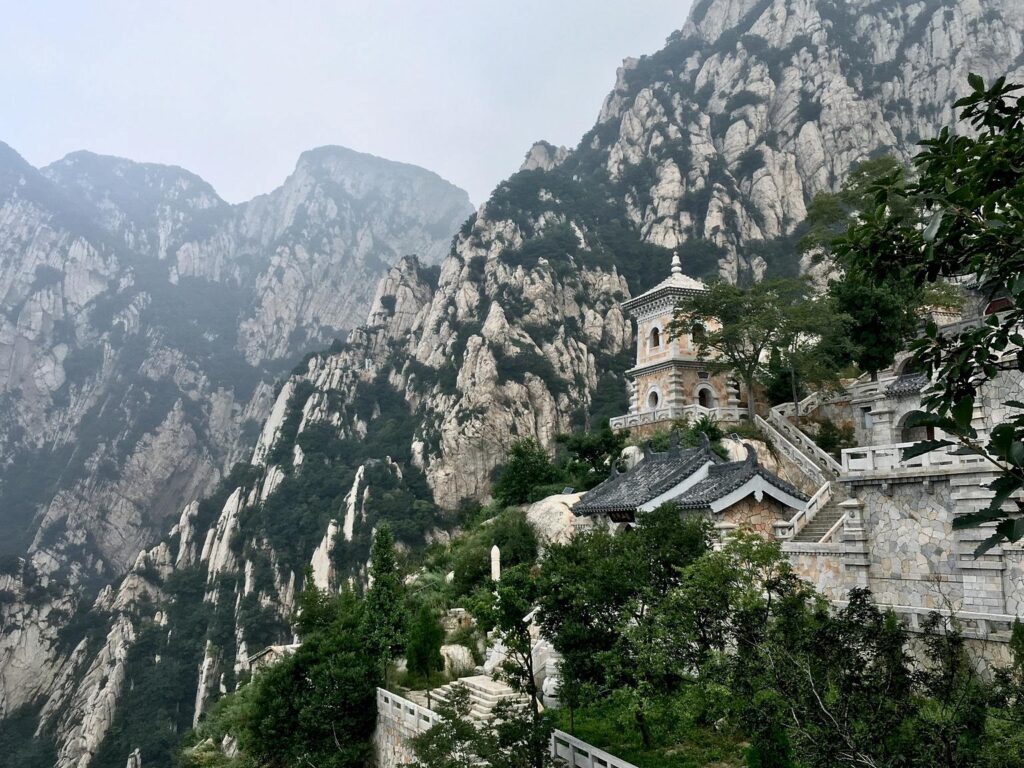
Sanhuangzhai Temple is located at an altitude of about 1,200 meters above sea level on the slope of Mount Shaoshan. The name "Sanhuangzhai" translates as "Fortress of the Three Emperors" and is associated with the veneration of three mythological rulers of ancient China: Fuxi (伏羲, Fúxī), Shennong (神农, Shénnóng) and Huangdi (黄帝, Huángdì).
- Fuxi (伏羲, Fúxī) — is considered the first emperor and the creator of the I Ching (易经, Yìjīng) divination system, as well as the inventor of writing and the founder of family traditions.
- Shennong (神农, Shennong) - known as the "Divine Farmer" who taught people agriculture and the use of medicinal herbs.
- Huangdi (黄帝, Huángdì) — "The Yellow Emperor", considered the founder of the Chinese nation, patron of medicine and Taoism.
Explanation of the triad
- Tianhuang (Heavenly Emperor): Symbolizes power over the heavens and cosmic order. Often associated with Fu Xi, who is considered the creator of the I Ching divination system and the establisher of harmony between heaven and earth.
- Dìhuáng (Earth Emperor): Represents earthly powers and fertility. Usually associated with Shennong, who taught humans agriculture and the use of herbs.
- 人皇 (Rénhuáng, Human Emperor): Represents humanity and social order. Most often associated with Huangdi, who is considered the founder of the Chinese nation and cultural traditions.
This triad reflects the philosophical concept of harmony between Heaven, Earth and Man (天 Tiān、地 Dì、人 Rén), which is central to Chinese thought, especially Taoism. It emphasizes the balance between cosmic and earthly forces, and the role of man in maintaining this balance.
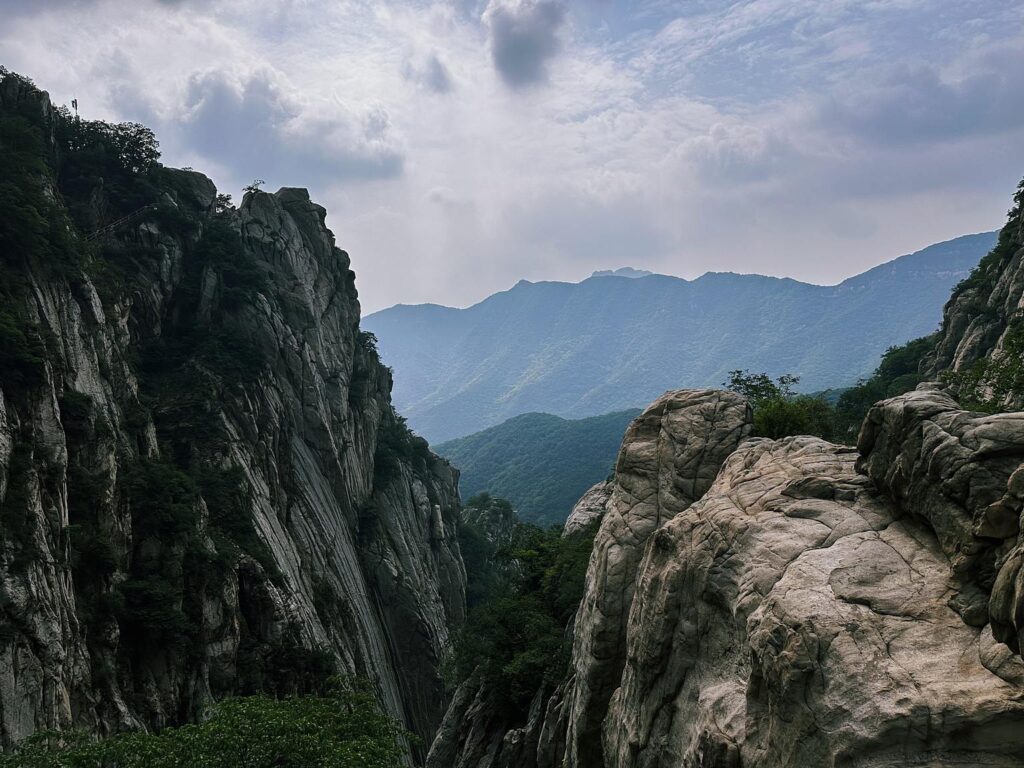
The temple was built as a place of worship for these legendary emperors and also as a defensive point, given its strategic location on the steep slopes of the mountain.
History of the temple
Sanhuangzhai has a long history dating back to the Tang Dynasty (唐朝, Tángcháo). It was originally a small Taoist temple, but over time it became an important pilgrimage site, especially due to its proximity to the Shaolin Monastery. During the Ming Dynasty (明朝, Míngcháo, 1368–1644), the temple was expanded and fortifications were built around it, giving it the name zhai (寨, zhài), meaning fortress. The temple has been destroyed and rebuilt many times, especially during periods of war and revolution, but its present appearance retains elements of traditional Chinese architecture.
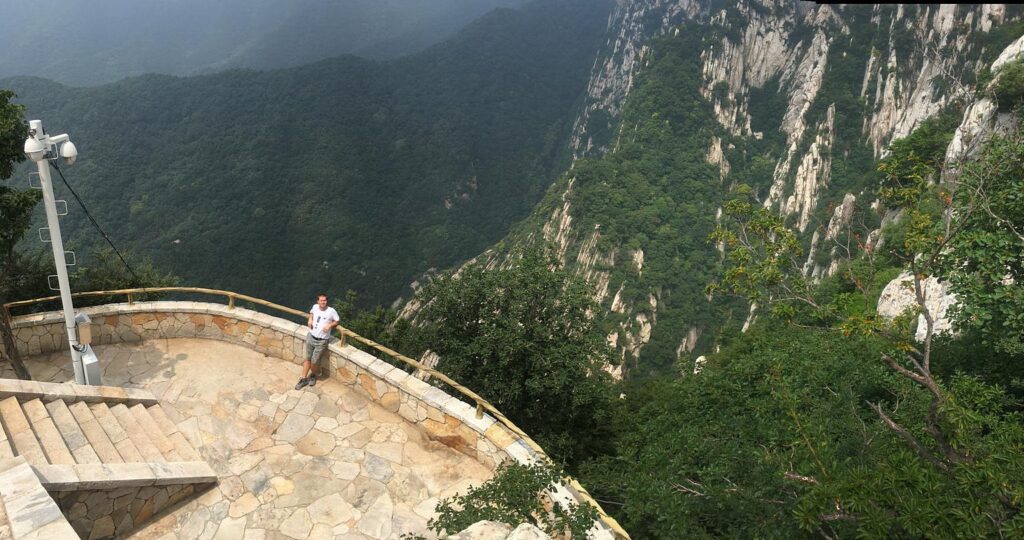
This is a natural fortress hanging on the slope of Shaoxi. It is oriented east-west, leaning against Shaoxi and facing Meinüfeng Peak (美女峰, Měinǚ fēng). It is surrounded by deep precipices on three sides. In spring and summer, there are green forests and the scent of flowers; in autumn, there are scarlet and gold colors of the forests; in winter, there are snow-capped peaks like dancing silver snakes. This scenery is called the "Immortal View of the Three Emperors" (三皇仙景, Sānhuáng xiānjǐng).
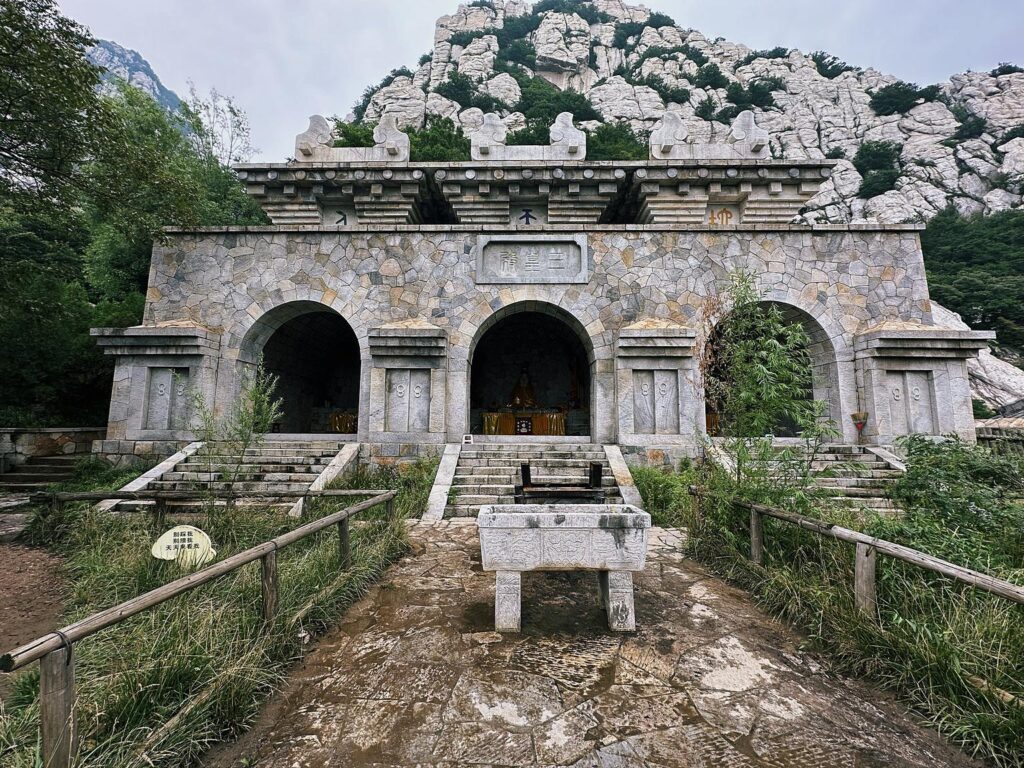
The exact date of the fortress's founding is unknown, but legend has it that it was named after the exploits of Fu Xi and the other "Three Emperors" in the Songshan area. Within the fortress is the Sanhuang Temple (三皇殿, Sānhuáng diàn), where three majestic golden statues stand. In the center is Fu Xi; on the left is Shennong, holding grains, the one who tasted herbs, grew the five grains, and taught the people agriculture; on the right is Huangdi Xuanyuan (轩辕氏, Xuānyuán shì), wearing a crown, majestic and stately. These three ancestors are considered the progenitors of the Chinese nation (中华民族, Zhōnghuá mínzú). Among the temples and monasteries of Songshan, only here are deities venerated who stand outside the Three Teachings (三教, Sānjiào), with an emphasis on the ancestors of mankind. There are even a couple of lines in a pair of sayings:
"Leap beyond the worldly vanity of the three worlds, enter the cave of white clouds"
跳出红尘三界外,入注白云一洞中
Tiàochū hóngchén sānjiè wài, rù zhù báiyún yīdòng zhōng
Next to Sanhuang Temple, there is a plaque with the inscription "Record of the Restoration of Sanhuang Temple" (重建三皇殿记, Chóngjiàn sānhuáng diàn jì). It states that in ancient times, there was already a great Sanhuang Temple here, where Fu Xi and other emperors were worshiped, but over time it became dilapidated and collapsed, leaving only ruins. In 2011, the abbot of Sanhuangzhai Monastery, Master Dejian (释德建, Shì Déjiàn), restored the temple during the construction of the monastery.
From this place there is a view of the surrounding peaks: some rise up, others stretch in a chain, some resemble a roaring tiger, others an awakening lion, others a lying dragon or a turtle with a shell. According to their shapes, they are called Jinyoufeng (金牛峰, Jīnniú fēng), Bailufeng (白鹿峰, Báilù fēng), Shichengfeng (石城峰, Shíchéng fēng), Zhuojianfeng (卓剑峰, Zhuójiàn fēng), Boyufeng (钵盂峰, Bōyú fēng), Baiyunfeng (白云峰, Báiyún fēng), Wuzhufeng (五乳峰, Wǔrǔ fēng) peaks. The peaks, surrounded by dense forests, compete in beauty and grandeur, creating a picturesque and breathtaking landscape.
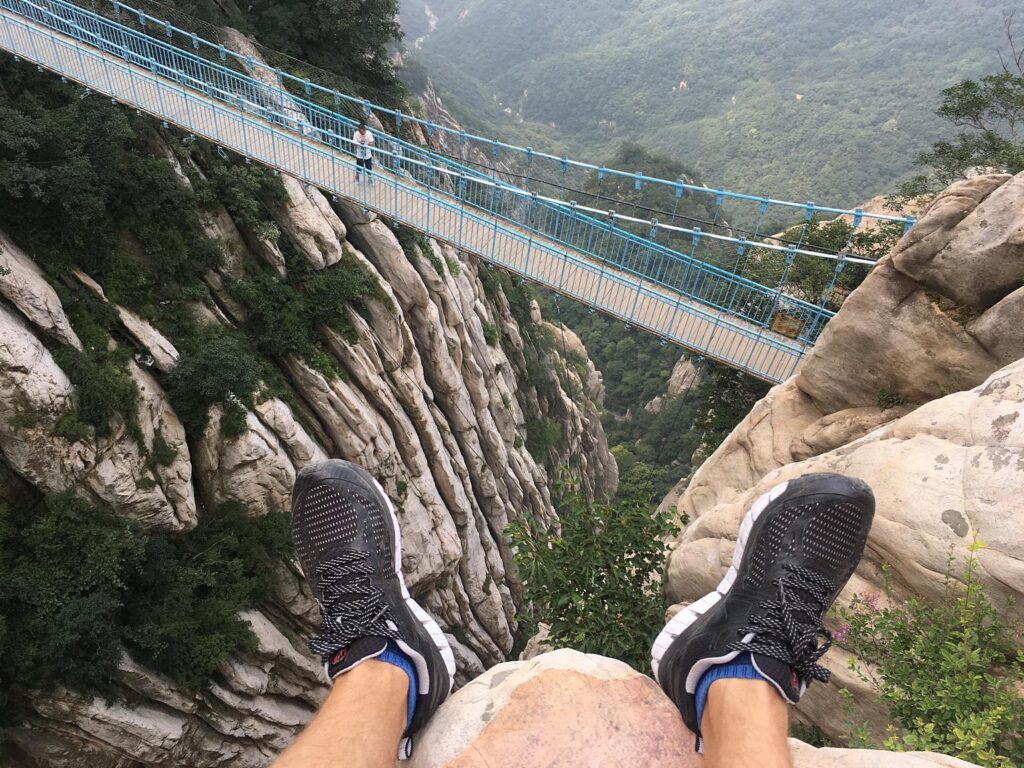
Interesting fact: Sanhuangzhai is famous for its suspended wooden walkways (栈道, zhàndào), which are literally “attached” to the sheer cliffs. These walkways, built without the use of nails, are considered engineering marvels of their time. They allow visitors to safely navigate the steep slopes while enjoying the breathtaking views of the Songshan Mountains. It is said that Shaolin monks used these walkways to meditate in solitude, away from the bustle of the world. The walkways do not survive.
Songshan Geopark
Songshan Geopark covers an area of approximately 35 square kilometers and includes both natural and cultural attractions. It was designated as a UNESCO World Geopark due to its unique geological history, which spans more than 3.5 billion years. The Songshan Mountains are one of the oldest mountain ranges on the planet, and their rocks represent a “stone record” of the Earth’s evolution.
Geological significance
The area boasts geological formations from five eras: Archean, Proterozoic, Paleozoic, Mesozoic and Cenozoic, making it a natural geological museum and unique to scientists studying plate tectonics and continental formation. The trail to Sanhuangzhai features exposed rock formations that illustrate these ancient processes. The poet and traveler Xu Xiake wrote in the Ming Dynasty: “Songshan is the treasure trove of the Celestial Empire, Shaoshan is the embodiment of danger and wonder. Without visiting Sanhuangzhai, one cannot call oneself a guest of Shaolin.”
Perhaps this is why Songshan Geopark became part of UNESCO's Global Geoparks Network in 2010, underscoring its importance not only to China but to the world. Regular scientific research is conducted here, and some sections of the trail are equipped with information boards for tourists explaining the geological features.
Source: Songshan Geopark Official Website
Research and cultural significance
The Songshan Mountains, and the area around Sanhuangzhai in particular, are studied not only by geologists but also by historians and experts in Chinese martial arts. The Shaolin Monastery, located at the beginning of the trail, is considered the birthplace of kung fu (功夫, Gōngfu), and many legends link the mountain trails to the training of monks. Some researchers believe that steep slopes and secluded places like Sanhuangzhai served as natural “gyms” for the monks, helping to develop their stamina and fortitude.
Chinese historical texts mention that during the Northern Wei Dynasty (北魏, Běiwèi, 386–534), Shaolin monks often climbed to Sanhuangzhai to perform rituals and meditate in order to “connect with the heavenly energy” of the Songshan Mountains. This underscores the spiritual significance of the trail as a path to enlightenment.
Advice before climbing
Although it is more of a walk, combining the power of natural beauty, geological uniqueness and spiritual significance. Do not forget that the climb, which requires physical fitness, as the trail includes steep stairs and narrow passages.
Read ten thousand books, walk ten thousand li
读万卷书,行万里路
dú wànjuàn shū, xíng wànlǐ lù
I recommend comfortable shoes and plenty of water, especially in hot weather. At the top, the stunning views of the Songshan Mountains are a reward for the effort.
The route takes 2-4 hours, depending on your preparation and desire to take photos. The last golf cart on the south side leaves at 5:30 p.m.


